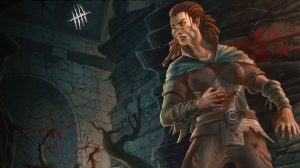In a previous Board Game Step Ladder, I discussed the concept of games featuring asymmetric powers: games which ask the players to achieve the same goals, but start each player off with unique properties that generally make them more efficient at doing one thing while making them less efficient at doing another. With asymmetric powers, the players are largely playing the game the same way as everyone else.
In today’s Step Ladder, we’ll be talking about asymmetric roles. In a game with asymmetric roles, while the players are all playing the same game, the way that they’re playing the game is so vastly different from some (if not all) of the other players, that it’s almost like they’re playing different games. Sometimes the players all have the same end goal in mind. Other times this is not the case, as you’ll soon see.
So, let’s get started shall we?
Mastermind -> Fury of Dracula -> Root
Mastermind
Invented in 1970 by Mordecai Meirowitz, an Israeli postmaster and telecommunications expert, Mastermind is a classic game of deduction. The game consists of a decoding board which is divided into several rows of four holes each. The end of each row contains a set of four smaller holes. At one end of the board is a row of four holes with an articulated cover that can be flipped up or down to hide the contents of the holes from view. Also included in the game are a set of differently colored “code pegs” and another set of smaller “key pegs” which come in black and white. The code pegs fit into the holes in the rows while the key pegs fit into the smaller holes at the end of each row.
At the end of the board with the articulated cover sits the Codemaker. We’ll call the row of holes that get covered up by the cover the “code row”. At the other end sits the Codebreaker. Before the game begins, the Codemaker will secretly choose four of the code pegs and arrange them into a pattern in the code row with the cover up so that the Codebreaker cannot see the arrangement. For the rest of the game, the Codebreaker will be trying to guess the sequence of the code pegs that the Codemaker has concealed from them.
Wagering a guess is as easy as picking any four code pegs and placing them in any order into the empty row closest to the Codebreaker. Once the Codebreaker has wagered a guess, the Codemaker will then provide the Codebreaker information about their guesses in the form of key pegs. Each black key peg corresponds to a code peg that is both the correct color and in the correct position. Each white key peg corresponds to a code peg that is the correct color, but not in the correct position. If no key pegs are provided by the Codemaker, it means that none of the code pegs proffered by the Codebreaker were of the correct color.
There are different ways to play the game. In one method, the players agree upon a total number of games played ahead of time (with each playing the part of Codemaker once per game) . Each guess made by the Codebreaker is equal to a point scored in the Codemaker’s favor. The object is to be the player with the most points at the end of the agreed upon number of games. The game can also be played as a one shot. Played as a one shot game, the Codebreaker wins the game if they manage to guess the pattern, but the Codemaker wins if they do not.

In Mastermind the two players play the game in vastly different ways. The Codemaker takes on a more passive role after setting up the original puzzle while the Codebreaker takes on a more active one for the rest of the game. In other classic deduction games like Clue or Guess Who?, the players are all taking on the same roles and playing the game in the same way. Not so in Mastermind. In this game, each player has a very clear pre-defined role with vastly different objectives.
The problem with Mastermind is that it is very simplistic in terms of gameplay and it falls into a category of games known as “solved games”. In 1977, an American mathematician named Donald Kuth proved that any game of Mastermind can be solved in 5 moves or less. Once you’ve played it a few times and understand what Donald Kuth’s algorithm is trying to do, Mastermind becomes trivial and quickly loses its lustre. Still, it deserves a spot on this step ladder because, for many of us, it was probably our very first foray into the concept of asymmetric roles. The next game on our list ramps things up in terms of complexity.
Fury of Dracula
Fury of Dracula relives the events of Bram Stoker’s titular novel. One player takes on the role of Dracula and the other players take on the roles of vampire hunters who want to take him down. Fury of Dracula is a more complex and involved descendant of hidden movement classic Scotland Yard. The hunters win collectively if they are able to successfully defeat Dracula, but Dracula wins if he is able to survive long enough for the game timer to run out – a timer which Dracula can actually cause to progress even faster.
Each hunter has unique abilities that set them apart from the others. One is able to heal themselves or others. One is much stronger. One moves across the map more efficiently. These asymmetric powers work in tandem to help the hunters locate and corner their prey. You may recognize the presence of asymmetric powers, the subject of the Board Game Step Ladder mentioned previously.
What lands Fury of Dracula on this list, though, is the way that Dracula operates. While the different hunters do have their own abilities, they are largely the same entity in that they win the game in the exact same way: killing Dracula. But the player that is controlling Dracula is playing a vastly different game – one of intrigue, bluffing, and desperation.
When the game begins, the hunters have visible pre-selected starting locations, but Dracula’s is kept secret. During the game hunters can earn resolve that can be spent to teleport around the board, gain knowledge about Dracula’s location, or heal some wounds, but usually they will be moving and then using one of the basic actions: resting, resupplying, or trading. Resting allows a player to heal some of their wounds with the negative effect of supplying the Dracula player with valuable event cards that mean bad news for the hunters. Resupplying allows the players to draw Items (knives, garlic, holy water, etc.) that can be used when battling Dracula or his minions or random event cards which may benefit the hunters, but could just as easily benefit Dracula instead. Trading allows the hunters to transfer items back and forth if they happen to be in the same location.
Their mission is simple: find and kill Dracula. Even though they might not know a lot about him, they do know one thing for certain: Dracula hates trains and will only travel by road or by boat. Once they’ve pinpointed where he once was, they can begin to deduce where he might be right now and converge on that spot thusly. If they manage to land on the location where he is, battle ensues.

However, Dracula’s been around the block a few times and he’s a tricky character. On the Dracula player’s turn, they must move or they can use one of Dracula’s abilities which will cost him health and allow him to do things like gain extra movement or receive extra encounter tiles which are left behind in his wake, traps left behind for the hunters that stumble across them on later turns.
As an example of just one of the sneaky things the Dracula player can do – on their turn they can choose a location card and mix that with Dracula’s wolf form ability (which gives Dracula an extra movement) to give the impression that Dracula has moved multiple times, but he could be staying right where he is. Then again, maybe the Dracula player is just trying to make you think they stayed right where they are and actually did move. Bluffing and outwitting the hunters is the name of the game.
Fury of Dracula is an excellent example of asymmetric roles. There are two distinct sides and both play the game and win in very different ways. The next game on our list takes this concept and turns it up a notch. What if every player was playing a different game?
Root
The game of Root takes place in a forest that’s divided into clearings and wooded areas. Within this forest live 4 different factions of woodland creatures – the Marquise de Cat, the Eyrie Dynasty, the Woodland Alliance, and the Vagabond (with even more factions introduced across several expansions) – who all share the same goal: be the first faction to score 30 points. And that’s where the similarity ends.
Each faction in Root operates and scores points in different ways. For instance, the Marquise de Cat earns points by gathering resources and constructing as many buildings as he can. The higher the building cost, the bigger the rewards. However, the Marquise de Cat can only build in clearings where he has the most warriors present, so the other players will be trying to ensure that he does not and will even try to destroy the buildings that he has already constructed. His is a game primarily of expansion and defense with a little bit of offense thrown in to slow down the expansion of their opponents.

Then there’s the Vagabond, a lone wolf that prefers the solitude of the wooded areas in between the clearings. The Vagabond is loyal to nobody’s cause but its own – striking out against other factions just as easily as lending them aid. Striking out makes you hostile to that faction and you’ll earn additional points the more of their units that you are able to destroy. But aiding other factions is just as important. Not only does it reward you with victory points, but also items you can use to fulfill quests which also reward victory points.
And that’s just a high level overview of two of the easier factions. My fellow writer Tom Franklin wrote an excellent review of the digital Implementation of Root and goes into much more detail about how the various factions work in the game. I recommend you give it a read if what you’ve read here sounds intriguing. It’s a very clever game that encourages multiple plays, not just of the game itself, but of each of the various factions as well. Knowing how to play as the Marquise de Cat isn’t going to help you one whit if you choose to play as the Eyrie Dynasty. And this is the true hallmark of not only a great game, but of asymmetric roles as well.
I hope you’ve enjoyed your journey up the step ladder. If this step ladder appeals to you, be sure to check out the entire series.











While I feel like Root is definitely the go-to top rung of an asymmetric step ladder, the other two seem like strange picks! 2-player abstract to 1vsAll hidden movement to asymmetric wargame.
Personally, I would go with something like: ? -> Small World -> Root, with maybe Cosmic Encounter falling into that first slot. I’m sure someone could come up with other recommendations there as well.
Each of these Step Ladders I write always contains a game that is obtainable anywhere. So, for this one, I decided to begin with the most basic, easily obtainable asymmetric game there is: Mastermind. It’s a very one-sided game, though. The Codebreaker has most of the fun while the Codemaker is largely just as replacement for an A.I. Fury of Dracula brings additional players into the fold while also giving that Codemaker role something more interesting to do. Now they’re not just on the sidelines going through the motions. Now they’re actively involved. And I knew I wanted to end the Stepladder with Root.
Your suggestions aren’t bad and it pleases me that reading my article got you thinking about how you’d create your own Stepladder. Picking out just 3 games in a world where thousands of games are released every year is no easy task. As for Smallworld, that’s not really Asymmetric Roles. That’s Asymmetric Powers which is the subject of a different stepladder.